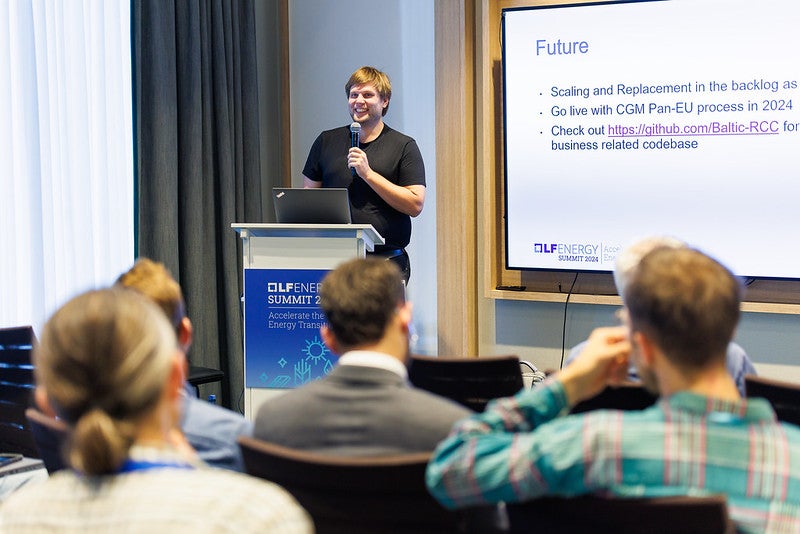LF Energy Summit Recap and Video: European Merging Function Made Open Source
At LF Energy Summit 2024 in Brussels, Kristjan Vilgo from Baltic RCC presented a session titled “European Merging Function Made Open Source.” This talk offered valuable insights into the challenges, strategies, and successes of implementing an open source approach in a complex, traditionally closed industry. A summary follows, and the full video of the session can be found at the end of the post.
Overview of Baltic RCC’s Role
Baltic RCC, one of six Regional Coordination Centers (RCCs) in Europe, is responsible for ensuring grid security by coordinating the efforts of various Transmission System Operators (TSOs). With offices in Estonia and Lithuania, Baltic RCC works on tasks like merging electrical network models from TSOs to create a consolidated grid model, which forms the basis for security and capacity assessments.
Challenges in Grid Modeling and the Shift to Open Source
Vilgo outlined several initial challenges faced by Baltic RCC, including slow vendor responses, proprietary data formats, and limited knowledge of standards across the industry. The initial assumption was that off-the-shelf tools could be easily adapted, but it became evident that the energy sector’s slow pace of change and lack of expertise in managing large-scale standardized data hindered progress. In particular, the infrequent updates from vendors and the small number of experts with knowledge of standards like CIM (Common Information Model) made it clear that a more agile solution was needed.
This led Baltic RCC to explore open source tools. In August 2023, they successfully built a proof of concept using the open-source tool PyPSA (Python for Power System Analysis) and custom Python code to collect and merge TSO models into the Common Grid Model (CGM). The success of this initial project set the stage for further exploration of open source methods.
Embracing Open Source Philosophy
Baltic RCC adopted a clear open source strategy, motivated by the philosophy of “public money, public code.” Vilgo emphasized that as entities funded by public resources, it made sense for TSOs to develop and share their tools in an open manner. This approach not only fosters collaboration but also mitigates the risk of vendor lock-in, a common issue in the energy sector. By using open source tools, Baltic RCC can invite contributions from a broader pool of experts and vendors, allowing for more flexible, faster-paced development.
Key Benefits of Open Source
One of the standout benefits Baltic RCC experienced from using open source tools was a tenfold increase in the speed of their grid modeling processes. The modular, service-oriented architecture built on Kubernetes and RabbitMQ allowed for efficient, scalable processing of grid models. The shift from a monolithic vendor solution to an open source, API-driven system also provided greater flexibility in adapting to changes and scaling as needed.
Community Building and Future Plans
While the technical challenges of implementing open source solutions were manageable, Vilgo noted that building a community around these tools remains difficult. With only a handful of potential users, including TSOs and RCCs, the open source community in this space is relatively small. However, Baltic RCC remains committed to fostering collaboration and sees potential in expanding this approach to other RCCs and TSOs across Europe.
Vilgo concluded by highlighting the importance of transparency and collaboration, both within the energy sector and in the broader open-source community. Baltic RCC’s journey toward open source solutions not only enhances efficiency but also sets a precedent for greater cooperation and innovation in grid management across Europe.
